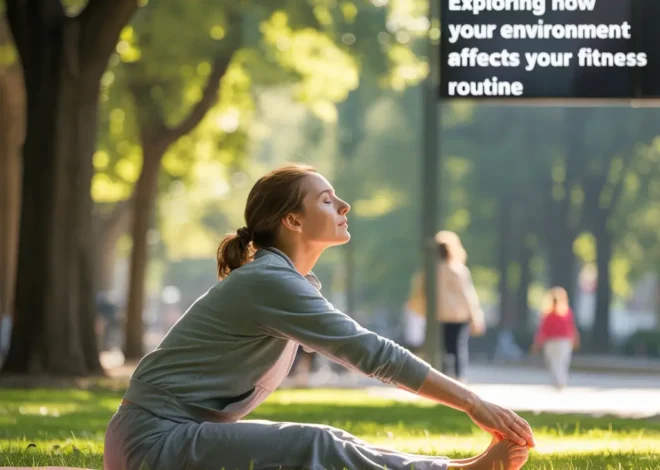
A Fitness Program that Incorporates Ballet, Yoga, and Pilates
Finding the right fitness program can be challenging, especially when you want to work on multiple areas like strength, flexibility, and mental focus. If you’ve ever looked for a balanced workout routine, a fitness program that incorporates ballet, yoga, and Pilates might be the perfect fit for you. This combination of disciplines brings together the grace and coordination of ballet, the mindfulness and flexibility of yoga, and the core strength and control of Pilates. In this article, we’ll dive into the benefits, structure, and key components of a workout that blends these three powerful forms of exercise.
Why Combine Ballet, Yoga, and Pilates?
Each of these fitness practices offers unique benefits. When combined into a cohesive fitness program, they provide a full-body workout that not only tones and strengthens but also improves flexibility, posture, and mental clarity. Here’s how each discipline contributes:
- Ballet: Ballet workouts, often referred to as “barre” in the fitness world, focus on balance, flexibility, and controlled, graceful movements. This type of training strengthens and tones muscles, especially in the legs, glutes, and core. It also improves coordination and posture.
- Yoga: Yoga emphasizes flexibility, breath control, and mindfulness. Through various poses and stretches, yoga increases range of motion, improves mental clarity, and helps alleviate stress. Yoga also promotes balance and stability, both physically and mentally.
- Pilates: Pilates focuses primarily on core strength and control. It emphasizes precision and breathing techniques while strengthening deep muscles that support the spine and pelvis. Pilates helps improve posture, body alignment, and muscle tone.
When combined, these disciplines create a fitness program that delivers a comprehensive approach to well-being. By blending the grace of ballet, the flow of yoga, and the strength of Pilates, this workout offers the perfect balance of endurance, flexibility, and control.
Benefits of a Ballet, Yoga, and Pilates Fitness Program
This hybrid fitness program delivers a variety of physical and mental benefits that target different aspects of health and fitness. Here are some of the key benefits:
1. Full-Body Toning
One of the primary advantages of this program is its ability to tone the entire body. Ballet engages the legs, glutes, and core through dynamic movements and balance-focused exercises. Yoga complements this by stretching and elongating muscles, helping to prevent bulkiness and increase lean muscle mass. Pilates reinforces core stability and provides additional strength training for the back, shoulders, and abdomen. Together, they ensure balanced toning across all muscle groups.
2. Enhanced Flexibility
Incorporating yoga into your fitness routine significantly improves flexibility, which is essential for preventing injuries and improving mobility. Ballet also contributes by challenging your body with deep stretches, and Pilates enhances flexibility through controlled movements that engage the muscles without overstressing them. Over time, you’ll experience increased range of motion, making it easier to perform daily tasks or other forms of exercise.
3. Core Strength and Stability
Core strength is the foundation of a strong body. Pilates, with its deep focus on abdominal muscles and pelvic stability, provides the core training essential for maintaining proper posture and body alignment. Yoga also strengthens the core through poses like plank and warrior, while ballet tones the abs and back through balance and controlled movements. This trio of disciplines results in a strong, stable core that improves balance, posture, and overall body control.
4. Improved Posture
Poor posture can lead to pain and discomfort, especially in the back, neck, and shoulders. Ballet emphasizes correct alignment, which teaches you to maintain proper posture both in and out of class. Yoga and Pilates further support this by strengthening the muscles that support the spine and promoting body awareness. Over time, you’ll find yourself standing taller, walking more confidently, and sitting with better posture.
5. Stress Relief and Mental Clarity
While this fitness program delivers a physical workout, it also nurtures the mind. Yoga is renowned for its ability to reduce stress and promote mindfulness through breath control and meditation. Pilates adds to this with its focus on precision and control, requiring you to concentrate on each movement. Ballet, while physically demanding, also has a calming and meditative effect through its graceful movements. Together, these practices help you relax, clear your mind, and reduce stress levels.
6. Balance and Coordination
Ballet is one of the best ways to improve balance and coordination. Its movements require you to engage your core and focus on proper alignment, making it easier to move gracefully. Pilates enhances this by improving control and precision, while yoga helps with both static and dynamic balance through its various poses. Improved balance not only benefits athletic performance but also prevents falls and injuries in everyday life.
Key Elements of the Fitness Program
A fitness program that incorporates ballet, yoga, and Pilates is designed to flow seamlessly between different types of exercises. Here’s how a typical session might be structured:
1. Warm-Up (10-15 minutes)
The warm-up phase usually begins with gentle yoga stretches, focusing on breath control and light movement to prepare the body for exercise. Sun salutations or simple standing stretches are often used to wake up the muscles, improve circulation, and ease into more dynamic movements.
2. Ballet Barre Work (15-20 minutes)
After the warm-up, the class transitions to ballet barre exercises. Using the barre for support, participants perform movements like pliés, tendus, and leg lifts to engage the legs, glutes, and core. The focus here is on balance, alignment, and controlled movements. Ballet helps build lower body strength while improving flexibility and coordination.
3. Pilates Core Work (15-20 minutes)
Once the legs and core are activated, the session shifts to a mat-based Pilates routine. Core exercises like the hundred, leg circles, and roll-ups help strengthen the deep abdominal muscles and stabilize the pelvis. Pilates movements are done with precision and control, encouraging participants to focus on breath and engage their core throughout the session.
4. Yoga Poses (15-20 minutes)
The yoga segment of the workout focuses on stretching, balance, and relaxation. Poses like warrior, tree pose, and downward dog improve flexibility, strength, and mental focus. This section also emphasizes breathwork, helping participants stay mindful and connected to their movements. The yoga poses work as both a cool-down and a way to deepen flexibility.
5. Cool-Down and Stretching (5-10 minutes)
The class ends with a relaxing cool-down, typically involving gentle stretches and breath-focused yoga poses like child’s pose and supine twists. This phase helps reduce muscle tension, improve flexibility, and promote relaxation, ensuring the body recovers properly after the workout.
Who Can Benefit from This Fitness Program?
A fitness program that blends ballet, yoga, and Pilates is suitable for a wide range of fitness levels, from beginners to more advanced practitioners. Here are some groups who can particularly benefit:
- Beginners: If you’re new to exercise, this program provides a gentle introduction to fitness with low-impact movements that build strength, flexibility, and balance gradually.
- Dancers: Dancers can benefit from the ballet and Pilates aspects, which improve coordination, flexibility, and core strength, essential for dance performance.
- Athletes: Athletes can use this program as a supplement to their primary training. The focus on balance, flexibility, and core strength can help prevent injuries and improve overall performance.
- Seniors: Older adults looking to stay active can benefit from this low-impact program, which improves mobility, balance, and posture while reducing the risk of falls.
- People with Chronic Pain: Those dealing with chronic pain, especially back or joint pain, may find relief through the core strengthening and flexibility components of Pilates and yoga.
Conclusion
A fitness program that incorporates ballet, yoga, and Pilates offers a balanced, full-body workout that builds strength, enhances flexibility, and promotes mental clarity. By combining the grace of ballet, the mindfulness of yoga, and the core control of Pilates, this program addresses multiple aspects of health and fitness in one comprehensive workout. Whether you’re looking to tone your body, improve posture, reduce stress, or simply stay active, this hybrid fitness routine is a powerful tool to help you reach your goals.



